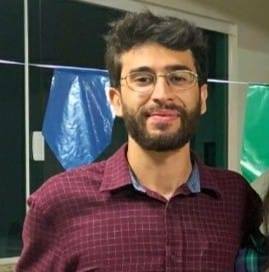My Master's Degree Dissertation
Introduction
The last post of my Master’s Degree series is about my dissertation developed under the supervision of Prof. Benilton de Sá Carvalho. My dissertation can be found here (in Portuguese) and the codes for the analysis performed is available here.
The aim of my dissertation was studied statistical techniques to analyse single cell RNA-sequencing (scRNA-seq) data. This type of experiment has become often due to the available technology tools which permits investigating the “omics” of a given biological system. It should be mention that omics stands for genomics, transcriptomics, proteomics, and metabolomics. Besides that, the first established high-throughput technology that provided significant discovers in science is the DNA microarray. An interesting discussion about the omics technology developments is presented by Dai and Shen (2022).
Particularly, the scRNA-seq technology enables high-throughput transcriptome profiling at the resolution of single cells. In the past, the transcriptome was measured considering a pool of cells through the bulk RNA-sequencing, which means that the expression of the genes (or transcripts) were measure as an average over a bunch of cells. Although the RNA-seq has been using to find out important scientific discovers in different biological materials, this technology can mask significant and biological differences between the type of cells
The first study using scRNA-seq was presented by Tang et al. (2009), who showed how to isolate and sequencing an unique cell. Since them, several studies have improved the protocol and nowadays there are studies that enable the sequencing of millions of cells in the same time. In 2013 the Nature journal identified the single cell sequencing as the method of the year.
The dissertation
With the unique opportunities to investigate biological system that single cell sequencing provides also there are specific characteristics that requires more sophisticated computational and statistical treatment. In my dissertation I performed a review of state of the art workflow for scRNA-seq, which covers the following steps:
- Processing the count matrix
- Control quality metrics
- Normalization methods
- Features selection
- Dimensionality reduction techniques
- Statistical analysis
- Cluster analysis
- Detection of marker genes
- Annotation analysis
- Differential expression analysis
An important reference that guided my studies is the book “Orchestrating Single-Cell Analysis with Bioconductor” by Amezquita, R., Lun, A., Hicks. S., Gottardo, R., and O’Callaghan, A. which covers in detail the most common workflows for the analysis of scRNA-seq using the Bioconductor tools.
Furtheremoe, motivated by a data set of cells from bronchoalveolar lavage fluid (BALF) tissue from patients with COVID-19, I performed a simulation, considering the particularities of a scRNA-seq data, to compare different approaches for differential expression analysis that incorporate the cell’s origin. After that, the usual workflow discussed in the research was adopted to analyze the BALF cells data set by characterizing groups of cells and comparing the expression genes levels of individuals under different experimental conditions.
Final comments
I am very grateful for the opportunity to work with professor Benilton, who have taught me several lessons beyond academia environment.
Although my research does not provide an innovation methodological advances, it has contributed for my critical education as a statistician, and also is a introductory material in Portuguese for the analysis of scRNA-seq.
Finally, one important lesson that I learned during my dissertation is that if you are able to properly simulate the data of the phenomena you are studying you have achieved a good understanding about the phenomena.
